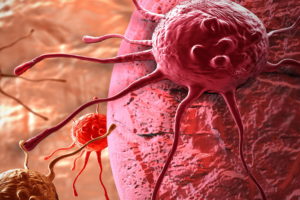
One-hundred million frames per second. That is the speed of one of the most sophisticated high-resolution video cameras, which is soon to be in development at the new Rosalind Franklin Institute for use in cancer treatment research.
The high-speed camera would enable researchers to capture video in unparalleled detail, exploring how light and sound can be used in innovative medical treatments.
“Understanding the mechanisms by which drugs can be efficiently distributed throughout a tumor may hold the key to developing effective treatments,” Eleanor Stride, an Oxford University engineer working on the project, told Digital Trends. “The camera will allow us to observe this microscopic and incredibly rapid processes for the first time.”
When it comes to studying how light and sound act upon human tissue, Stride said current high-speed cameras simply don’t make the grade in their combination of speed, resolution, and number of frames. “We needed to design a completely new system.”
The new system will be the first camera to capture 100 million individual frames per second at a one-megapixel resolution, while working across the spectrum, from infrared to ultraviolet. Current comparable cameras run at top speeds of 25 million frames per second.
The camera will consist of an approximately $2 million internal sensor, which will function like a hypersensitive version of what you would otherwise get in a digital camera, with another $4 million in optical components, electronic parts, and labor.
The researchers insist the price tag is worth the potential benefits.
“We are investigating multiple applications [for the camera],” Stride said. “For example, how drug-loaded particles that respond to ultrasound or lasers can be triggered to release and distribute their payloads to make sure that every cancer cell within a tumor is treated. How different wavelengths … of light can tell us whether an organ is receiving sufficient oxygen or not. Whether or not plaques are forming in a blood vessel to enable early-stage treatment of atherosclerosis and Alzheimer’s disease.”
Stride also pointed to applications outside of medicine, such as studying how to make materials stronger and “potentially even the initiation and control of nuclear fusion for clean energy generation.”
The researchers hope to have a working prototype in two years and a fully functional instrument within three. The project is a joint venture between multiple universities in the United Kingdom, including the University of Cambridge, University of Manchester, and Imperial College London.


